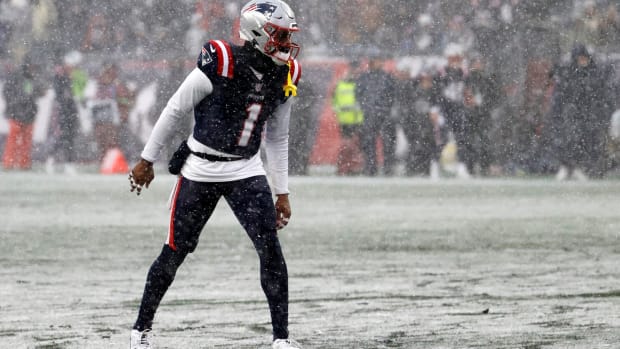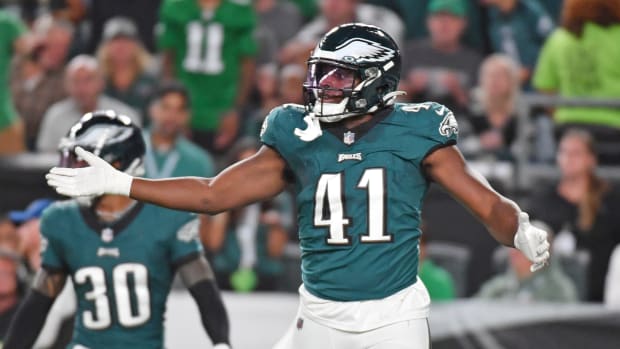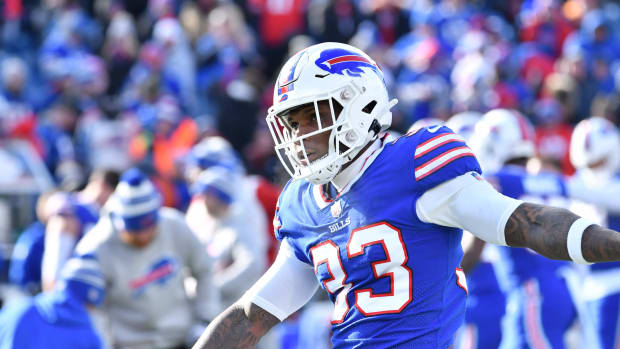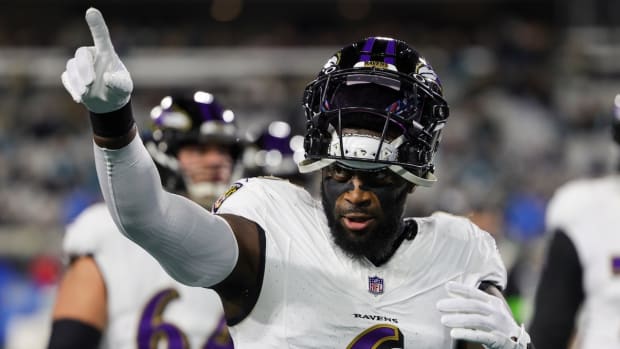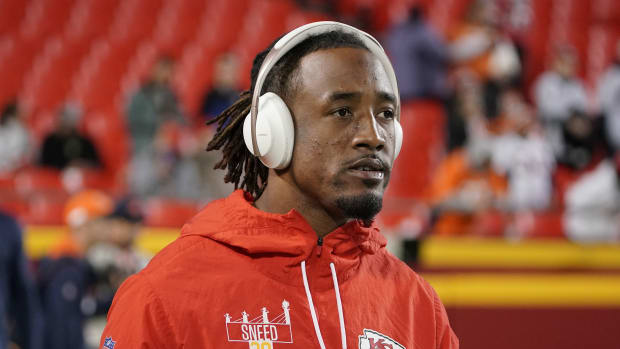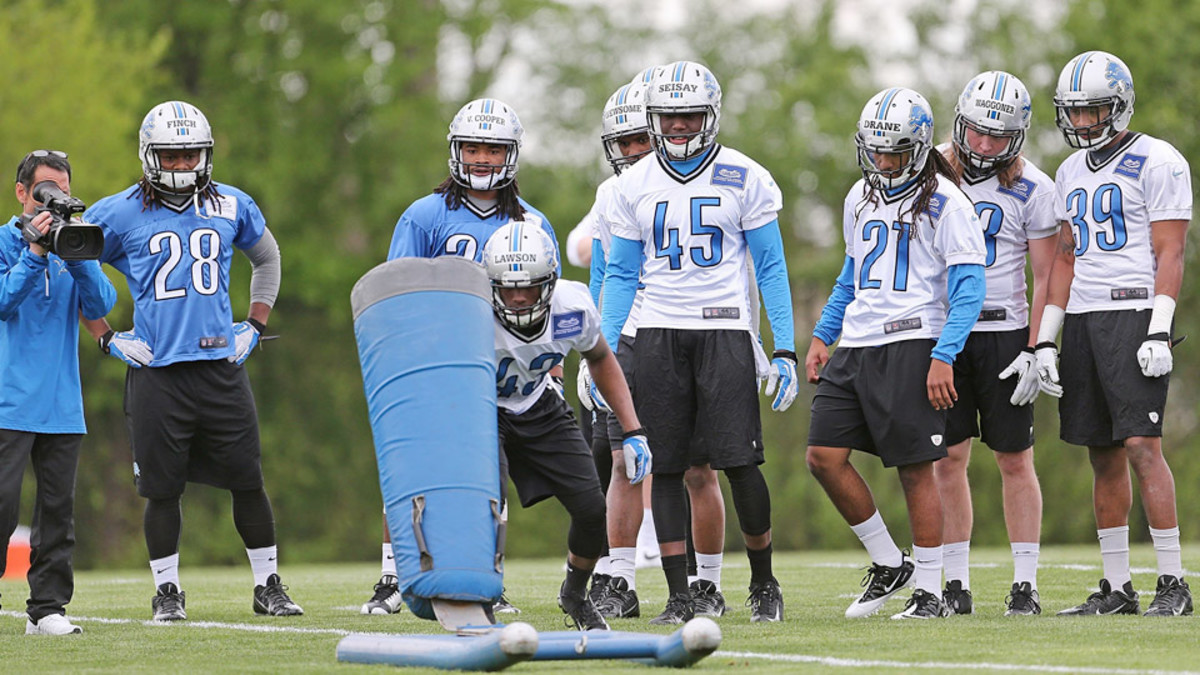
New league hoping to bring a true minor-league system to pro football
Tommie Harris was one of the lucky ones. A former Oklahoma standout, Harris appeared on the cover of Sports Illustrated’s draft preview in 2002 under the headline “So Good, It’s Scary.” He was a future star coming out of college and didn’t have to worry about slipping through the proverbial cracks at the next level.
Harris, when healthy during his eight-year NFL career, was as dominating an interior presence as the league had. Making a roster wasn’t on his mind until late in his career when injuries derailed his effectiveness.
Although he didn’t struggle to make the Bears early in his career, the three-time Pro Bowler watched every spring and summer as another group of camp bodies and roster-fillers never truly got a chance.
“I had sympathy toward a lot of players who were cut before they even stepped on the team,” said Harris.
“You knew that these guys weren’t going to make it before they even came in.”
MORE COVERAGE: Post-draft NFL Power Rankings | 2015 NFL Mock Draft
There were 256 players drafted in the 2014 NFL draft, but hundreds more joined rookie camps and earned tryouts from NFL teams -- anywhere from 20 to 40 per team, meaning as little as 600 players and as many as 1,000.
Nearly all of them will fail.
Brian Woods believes he has a solution, and he has the backing of a former NFL All-Pro on which to build his brand: Harris.
Woods, the executive director of the Medal of Honor Bowl, will launch the Fall Experimental Football League, or FXFL, this year as a place for young players to develop their skills playing professional football in the states as opposed to working out at home or going to Canada.
“We saw a need, looking at the existing, looming changes in the college landscape,” Woods said.
“The implication of the 2011 CBA which eliminates the amount of time of coaches can have with young players in the offseason … you’re going to see more of these kids who slip through the cracks.”
Even teams like Seattle and Green Bay that excel at bringing along young, unheralded players only have room for a handful of undrafted free agents on the active roster. Three, maybe four players.
When Johnny Manziel was drafted by the Cleveland Browns in the first round, he was worried about whether or not he’d be the starter. Within a few days, the Browns brought in 35 players for tryouts at rookie minicamps, all of them simply grateful to have the opportunity to don an NFL team helmet and shorts.
For every Malcolm Smith, the Seahawks’ seventh-round linebacker (pick No. 242) who became Super Bowl XLVIII MVP, there are hundreds of others who missed out on the NFL dream altogether. There are few stories like Smith because the NFL doesn’t have a true developmental league. Players who don’t make a 53-man roster are left to mull their options -- nearly all of which don’t involve professional football.
There have been attempts by the NFL to put together such a league, most notably the failed venture with NFL Europe, but nothing as successful and sustainable as the NBA D-League or MLB’s minor league farm system.
"Pro football has nothing," Woods told the the Associated Press. "The NFL has the practice squad, but it does not develop players because they don't get into games. You don't develop if you aren't getting on the field."
The NFL, for its part, said it had no specific plans in place to partner with the FXFL or any developmental league, but a spokesman said the league is always talking about how player development could be improved.
Troy Vincent, the NFL’s director of player operations, took that stance a step further with comments before the draft.
“We need to keep the pipeline of talent flowing, and that means for all areas of our game: players, coaches, scouts, game officials,” Vincent said in an interview with the AP.
“For all this football talent around, we have to create another platform for developing it. Maybe it’s an academy -- what would it look like? Maybe it’s a spring league; we’ll look to see if there is an appetite for it.”
Woods points to the NCAA’s outmoded businesses model as a driver for young players to leave college early to pursue their NFL dreams. In the 2014 draft, 98 underclassmen declared, a little less than double the number in 2010 (53).
“All the guys I talk to in the NFL say ‘We have a run away train there. That number is only going to increase exponentially.’”
Enter Harris, a visible name and face to put his stamp of approval on a fledgling startup football league. He’s the first owner of one of the six franchises in the FXFL, his in Austin, Texas. More franchises will be announced over the course of the summer.
Joining the FXFL held obvious appeal for Harris, who had been doing motivational speaking following his playing career. He wanted to mentor players and provide opportunities for those who lacked them.
“No. 1 is that we want to be able to show the players that someone else cares besides going out of your country to the CFL or what have you.”
But why is the FXFL different? For starters, the player salaries will be low, no more than about $1,250 per week, and the league will not rely on ad revenue from television contracts to stay afloat.
The idea is to go into cities where sports infrastructure is already in place, a city with a minor league baseball team for example, and partner with them to provide a field as well as a fan-friendly atmosphere.
The other advantage of going into cities with minor-league teams would be a built-in audience of sorts. If a minor-league baseball team is thriving at the gate, why wouldn’t a football team -- who would play games, in theory, after baseball season is over -- also work?
And here’s the rub for the FXFL: this isn’t going to compete directly with the NFL. The aim is to truly be a supplement to the league. Games would be played during the week to avoid conflicting with high school, college and pro games, but during the fall season when excitement and anticipation about football is the highest. Only players three or fewer years removed from college would be eligible to play. This won’t be a place for Chad Johnson or Terrell Owens to rehab a career.
Alan Pace, a former Real Salt Lake president and sports investor who the FXFL has brought in as a financial consultant, believes players will come to the FXFL because the supply hasn’t risen to meet demand. It’s a simple economic calculation. And the league only needs a few teams to make the model work.
“If you can get off the ground with six to eight teams, that’s enough to demonstrate a viable model. I don’t think you have to grow that fast from there,” Pace explained.
“You can demonstrate that it’s both competitive, real, it’s entertaining and it’s both viable and legitimate as a product.”
The FXFL will try to implement a true minor-league model, potentially one day to work in conjunction with the NFL, but for now they believe they can make the finances work simply by getting people to the park. With an overall league budget of around $8 million, the league doesn’t need to hit enormous revenue touchstones.
Harris understands this is a work in progress, but he believes the FXFL has all the tools needed to succeed.
“We’re putting together our own foundation, our structure. Where the games will be played. The pricing. We’re trying to make this concept something special and something that can continue to keep growing and growing."
It’s also potentially a win-win for the players and teams in the NFL.
“This is something that is going to be special for players in the years to come and I think it also gives the team the ability to not just make quick decisions, but to see and decide how well a player is developing.”
Eventually, the FXFL could function like other minor leagues where NFL teams hold stake in a franchise and could call up players during the season. (If the NFL calls, a player could leave the FXFL without a problem because there would be no long-term contract.) For now, it will be a place where NFL teams can send scouts to see players in professional football action, and it could serve as a breeding ground for coaches, referees, scouts and executive personnel.
Harris has already reached out to his connections in the NFL about being part of the FXFL, and says his staff is already deep in player evaluation for potential members of his franchise.
“If the NFL throws you away, the FXFL will let you play,” Harris said, his tongue firmly planted in his cheek.
But all jokes aside, that’s exactly what Harris and the FXFL are banking on. And there are literally hundreds of players thrown away by the NFL every year. They may finally have a place to go.
































